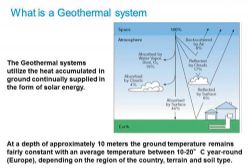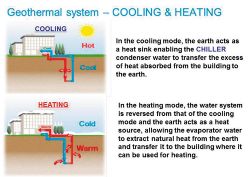When looking at climate control requirements for a hospital or healthcare facility, it's vital to examine the whole building's heating and cooling needs in order to create a highly energy efficient solution. Martin Hayward looks at the pros and cons of chillers and the key points to be considered when designing and specifying systems for the healthcare environment
Despite a marked increase in the use of Variable Refrigerant Volume (VRV) technology to heat and cool buildings over the past decade, chiller based HVAC systems still have a vital role to play in all types of large scale environments where the needs of many cooling applications can only be met by the use of cold water, and this applies especially to hospitals.
Instead of looking at specific areas of a hospital in isolation, it's vital to look at the whole building or estate's needs in order to offer a complete solution. Only when this approach is taken at the design stage can we be sure that the highest levels of energy efficiency are being met.
As the largest public sector contributor to climate change, the NHS is under particularly strong pressure to deliver a programme of action to reduce its emissions and increase energy efficiency to meet the Government's 2050 targets, while joining other public sector organisations in leading the vanguard against climate change.
New standards and regulationsThis pressure has led to a stream of new standards and regulations and it is only by taking a whole building approach to climate control that these demands will be met.
Unlike many other commercial buildings, hospitals have a very specific set of climate control needs. Cooling is required all year round for operating theatres, equipment such as scanners, as well as IT rooms and kitchens.
Both cooling and heating are required on a seasonal basis for wards, offices, consulting rooms and public areas. There's also a massive requirement for hot water and, to a lesser but still vital extent, a need for refrigeration in areas as diverse as kitchens and mortuaries.
With so many conflicting requirements, it's impossible for a single solution to meet them all. Chillers are excellent for cooling, but more limited for heating. VRV is adept at both, but can't achieve the lowest cooling temperatures required for such a specialist environment. Advanced equipment such as MRI scanners can only be cooled sufficiently with chilled water - something that VRV alone cannot provide. It's therefore necessary to use a combination of technologies that can together produce the required results at the highest levels of energy efficiency.



For areas in the healthcare environment that require year-round cooling, such as operating theatres and rooms housing diagnostic equipment, chillers offer the best option. They provide flexibility and offer an almost endless variety of configurations. Chillers are also the only real option for buildings needing more than 600kWh of cooling capacity, as they're the most efficient solution for such a large requirement. They're particularly suitable for new-build hospital applications, where their flexibility means that they can be specified precisely according to the needs of the client.
Applied chiller solutions are also more suited to applications where large volumes of fresh air are needed, but it's not possible to open windows. This is of particular importance in the healthcare environment, where low temperatures are required as part of anti-bacterial or antivirus infection control strategies.
However, where heating is required, VRV comes into its own. VRV's great advantage for hospital environments is that, as it varies the refrigerant volume within the system to match the building's precise requirements at any moment, each area can maintain its set temperature while saving both money and reducing emissions because only the minimum level of energy is required.
The efficiencies that this heat pump based technology delivers, are typically three to five times the energy input and by incorporating heat recovery, it's possible to increase the efficiency even further.
Heating and cooling
This makes VRV ideal for areas in hospitals that require both heating and cooling, such as wards or reception areas. The additional benefit is that areas of the building that experience the highest heat gains can be cooled by transferring this excess heat to other areas that require heating or hot water.
VRV systems are also perfect for smaller healthcare environments such as community hospitals or medical centres, where year round cooling is not required, and there would be little requirement for a chiller system.
Refrigeration systems also produce heat as a by-product of the cooling process. By using a VRV-based refrigeration system such as Daikin's R410a CVP, it's possible to recapture this heat and use it elsewhere. So, the heat emitted by the cooling system in the cold store of a hospital kitchen could be used to heat hot water for that same kitchen.
However, it should be remembered that chillers are also capable of delivering either partial or full heat recovery from water. A chiller expels hot air as it cools the water, so by recovering that heat through a secondary heat exchanger, temperatures of up to 55 deg C can be achieved with full heat recovery and with partial heat recovery this can go up to 60 deg C.
Even though higher temperatures may be required, this process means that less energy will be needed to reach optimum temperatures.
Whatever the application, but especially in hospitals and the healthcare setting, it is vital to analyse from the outset the precise heating and cooling requirements, how these may change, taking into account seasonal variation and the extent of flexibility that any system may require. Only then should decisions be made as to which solution is most appropriate.
Given the pressure on health estate managers to act quickly and reduce downtime, it's common for quick decisions to be made, but to replace heating or cooling systems like for like may end up costing more in the long run.
// The author is manager of Daikin UK's Applied Systems department //